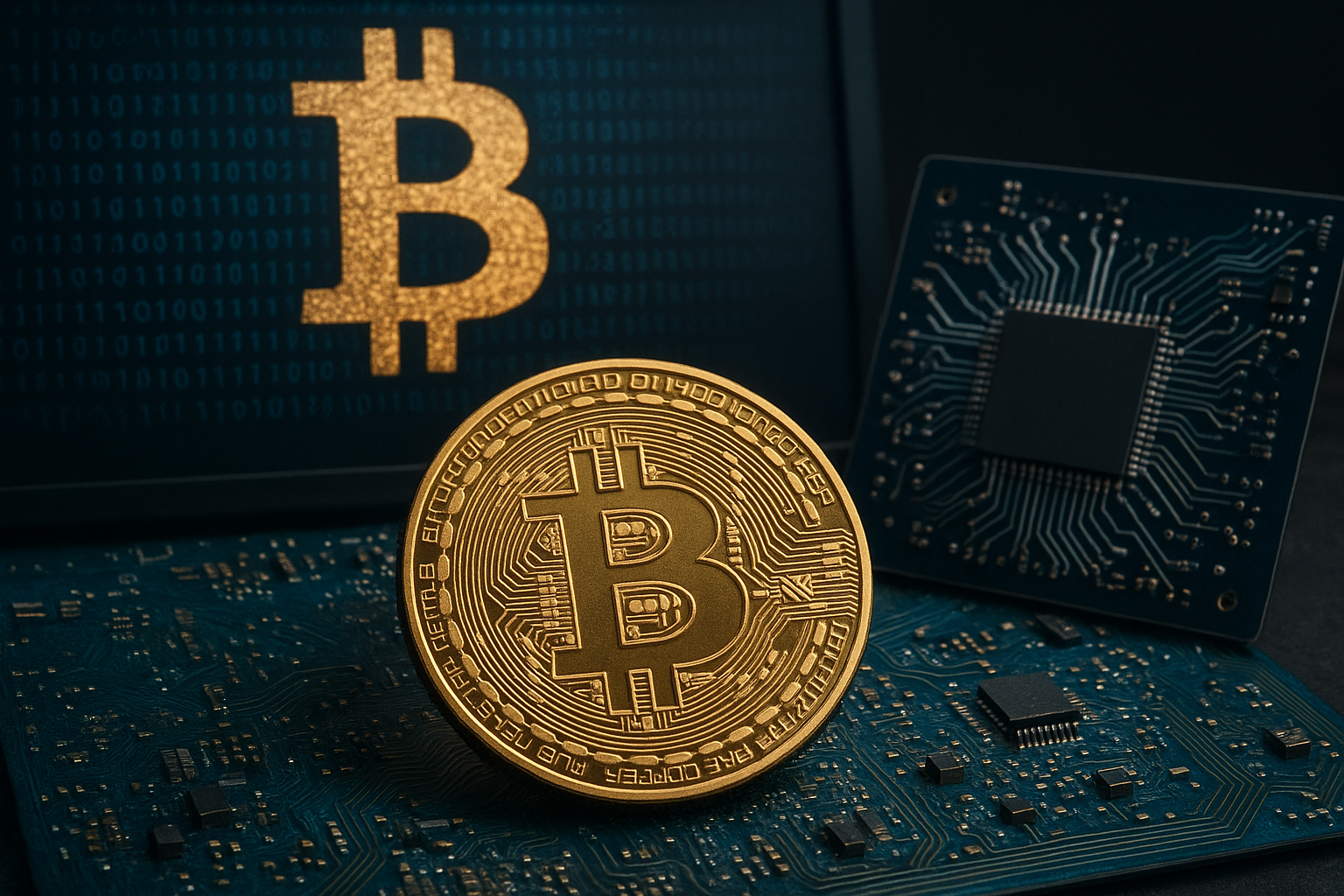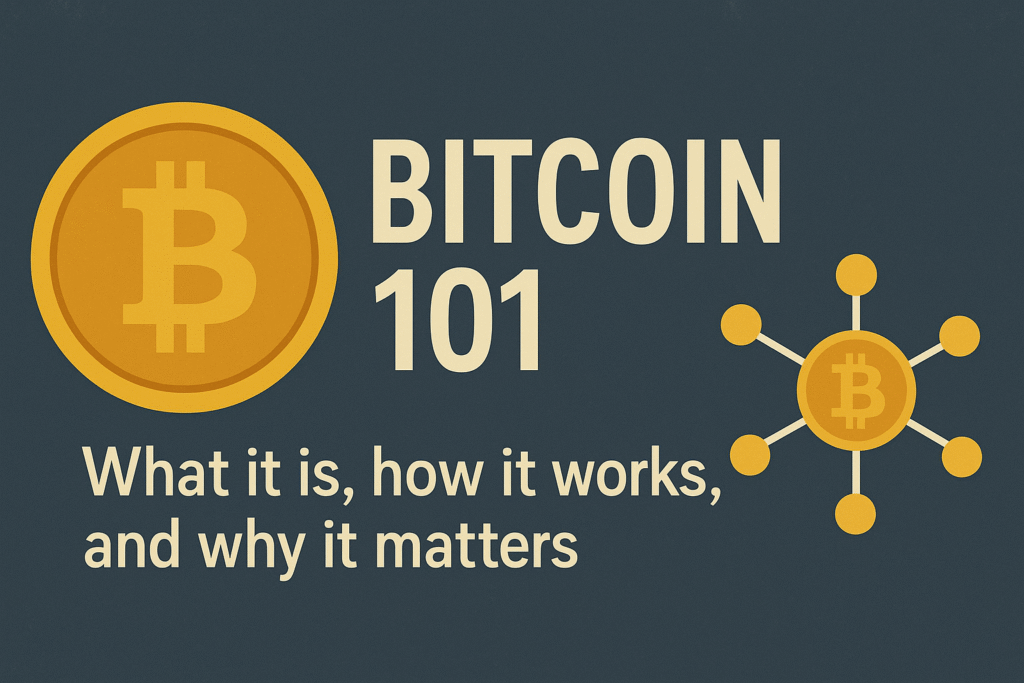Bitcoin is a digital form of money that operates without a central bank or single administrator. It was created in 2009 by an anonymous developer or group known as Satoshi Nakamoto and has since grown into a global network used for transfers, savings, and as a potential store of value. At its core, Bitcoin is a decentralized system that combines a public ledger, cryptography, and a network of participants to enable peer-to-peer money movement across borders.
What Bitcoin is
– A digital asset and payment network: Bitcoin is both a digital currency and the infrastructure that records and processes transactions.
– Decentralized and open: No single authority controls it. Anyone can participate by running software that helps validate transactions and secure the network.
– Public ledger: All Bitcoin transactions are recorded on a shared, tamper-evident ledger called the blockchain. The history is public, traceable, and maintained by a global network of computers.
– Limited supply: The total number of bitcoins that will ever exist is capped at 21 million. This scarcity is built into the protocol and is a key part of its economics.
– Pseudonymous, not strictly anonymous: Transactions are tied to addresses rather than real names. While you can see the flow of funds between addresses, linking an address to a person requires additional information.
How it works
– The building blocks: People hold bitcoins in digital wallets, which are controlled by private keys. A private key is a secret piece of data that proves ownership of the funds in a given address. A corresponding public key and address are derived from that private key, allowing others to send you bitcoins.
– Transactions and signatures: When you send bitcoins, you create a transaction that references outputs from prior transactions (the UTXO model). You sign this transaction with your private key, proving you own the funds you’re spending. The network then validates that the inputs are unspent and that the signature is correct.

– The role of blocks: Transactions are collected into blocks by network participants called miners. Miners compete to solve a difficult mathematical puzzle; the first to solve it broadcasts the new block to the network, and other nodes verify it. If valid, the block is added to the blockchain.
– Proof of work and consensus: Bitcoin uses proof of work to secure the network. This requires considerable computational effort and energy, but it makes altering past transactions extremely expensive. The longest valid chain with the most cumulative work is considered the authoritative history.
– Fees and incentives: Miners are rewarded with newly created bitcoins (the block reward) and with transaction fees. As new bitcoins are issued, the reward halves roughly every four years, gradually reducing new supply over time.
– Finality and confirmations: After a transaction is included in a block, it receives confirmations as more blocks are added on top. More confirmations increase the likelihood that the transaction is final and irreversible.
– Layering and scaling: For everyday use, some people rely on second-layer solutions like the Lightning Network, which enables faster and cheaper microtransactions by conducting many small transfers off the main blockchain and settling later.
Why it matters
– A new form of money: Bitcoin introduces a monetary system that is not controlled by a government or a bank. It’s designed to be open to anyone with internet access and to operate consistently across borders.
– Censorship resistance and sovereignty: Because there is no central authority that can confiscate or block funds, Bitcoin offers a way to move value even in places with restricted financial systems or unstable currencies.
– A global settlement layer: Bitcoin can act as a universal ledger for value, trusted by participants around the world. Its public nature means anyone can verify the history of ownership and transfers.
– Store of value and digital scarcity: The 21-million cap creates a predictable supply curve. Some people view Bitcoin as a hedge against inflation or a “digital gold” due to its scarcity and difficulty of replication.

– Innovation and network effects: Bitcoin has inspired a large ecosystem of wallets, exchanges, and infrastructure. It also sparked ongoing discussions about digital money, financial inclusion, and new technologies such as layer-two solutions and tokenized assets.
– Economic and policy considerations: Bitcoin prompts questions about monetary policy, financial regulation, and the role of central banks. Its growth influences how institutions think about payments, custody, and risk management in a digital era.
Challenges and caveats
– Volatility: Bitcoin’s price can swing dramatically over short periods. While this is part of its identity as a new and evolving asset class, it also means it’s not suited for all uses or as a stable store of value in the short term.
– Energy use and sustainability: The proof-of-work security model requires substantial energy. Advocates argue it’s a worthwhile investment for security and decentralization, while critics push for greener approaches or more efficient consensus mechanisms.
– Regulatory landscape: Bitcoin faces a patchwork of rules across countries, with varying implications for exchanges, custody, taxation, and use in everyday commerce. Regulation can affect liquidity, price, and accessibility.
– Security and custody: Users are responsible for protecting their private keys. If keys are lost or stolen, funds can be irretrievable. This makes choosing reputable wallets and practicing good security essential.
– Adoption and usability: While growing, Bitcoin remains more complex for newcomers than traditional payment methods. Onramping (buying bitcoin with fiat), securing wallets, and understanding fees require some learning.
Getting started at a high level
– Learn the basics: Understand how wallets, private keys, and addresses work, and recognize the difference between hot wallets (connected to the internet) and cold storage (offline).

– Choose a method to acquire bitcoin: You can buy on cryptocurrency exchanges, through peer-to-peer platforms, or via services that sell bitcoin with fiat. Consider the reliability, fees, and security practices of each option.
– Secure your funds: Use strong security practices, such as hardware wallets for long-term storage, backups of recovery phrases, and being careful with phishing attempts.
– Plan your approach to usage: Decide whether you’re primarily saving, paying for goods and services, or experimenting with microtransactions on second-layer networks.
A few useful distinctions
– Bitcoin vs. other cryptocurrencies: Bitcoin is the first and most widely recognized cryptocurrency, focused on secure, decentralized transfer of value. Other digital assets may offer different features, such as faster transactions, smart contracts, or different governance models.
– On-chain vs. off-chain: On-chain transactions occur directly on the main Bitcoin blockchain and are secured by the network. Off-chain solutions, like the Lightning Network, handle many small transactions off-chain and settle later on the main chain, enabling faster and cheaper payments.
– Fungibility and privacy: Each bitcoin is interchangeable with any other, in principle. Privacy protections are improving with new techniques and wallets, but the history of transactions is visible on the blockchain.
Bottom line
Bitcoin represents a radical rethinking of money: a decentralized, transparent, and scarce digital asset designed to function as a global means of exchange and a potential store of value. Its technology—the blockchain, the network of participants, and the economic incentives built into mining and issuance—creates a system that can operate without a central authority. Whether you view it as an investment, a new kind of money, or a technological experiment, Bitcoin has already influenced how people think about money, value transfer, and the power of open, permissionless networks. As with any transformative technology, understanding the basics, keeping security in mind, and staying informed about developments will help you engage with it more confidently.

